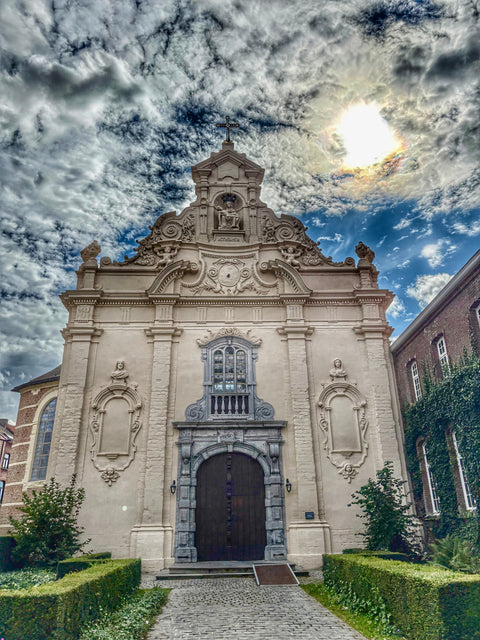Tucked inside a unique chapel and cloister of austere brick, you’ll find KADOC, the cultural archive of KU Leuven. Recognised by the Flemish government, KADOC is dedicated to preserving and studying the heritage of religion, culture, and society.

A Chapel with a Story
The chapel was built between 1641 and 1705 and soon became a well-known pilgrimage site dedicated to Our Lady of the Fever. This late Baroque chapel stands out with its finely detailed façade and its striking octagonal floor plan supported by freestanding columns.
The origins of the pilgrimage go back even further, to the early sixteenth century, when a wooden Pieta statue of the Virgin Mary was venerated here. In times of illness—especially fever—believers flocked to this spot, then known as the Vleminckxveld, to seek comfort and healing.
From Parish to Monastery
In the nineteenth century, the chapel was elevated to parish status. From 1871 onwards, it became part of a Franciscan monastery. The friars expanded the chapel with a choir, built a church and monastery next to it, and later added a small side chapel in the 1930s.
As monastic life gradually declined, the Franciscans eventually sold the monastery to KU Leuven. In 1987, the chapel and surrounding complex were entrusted to KADOC, giving this historic site a new cultural and academic role.
Restoration in Progress
Today, the chapel—together with the choir, side chapel, and sacristy—is undergoing an extensive restoration. Thanks to the support of the Ast Fonteyne Society, KU Leuven, and the Flemish government, this protected monument is being carefully renewed, with completion planned for 2025.
Once restored, the chapel will continue to grow as a vibrant space for art, heritage, and community gatherings. In the meantime, exhibitions, concerts, and other cultural events remain very much alive within its walls.

Photos by Aslı Tezcan



